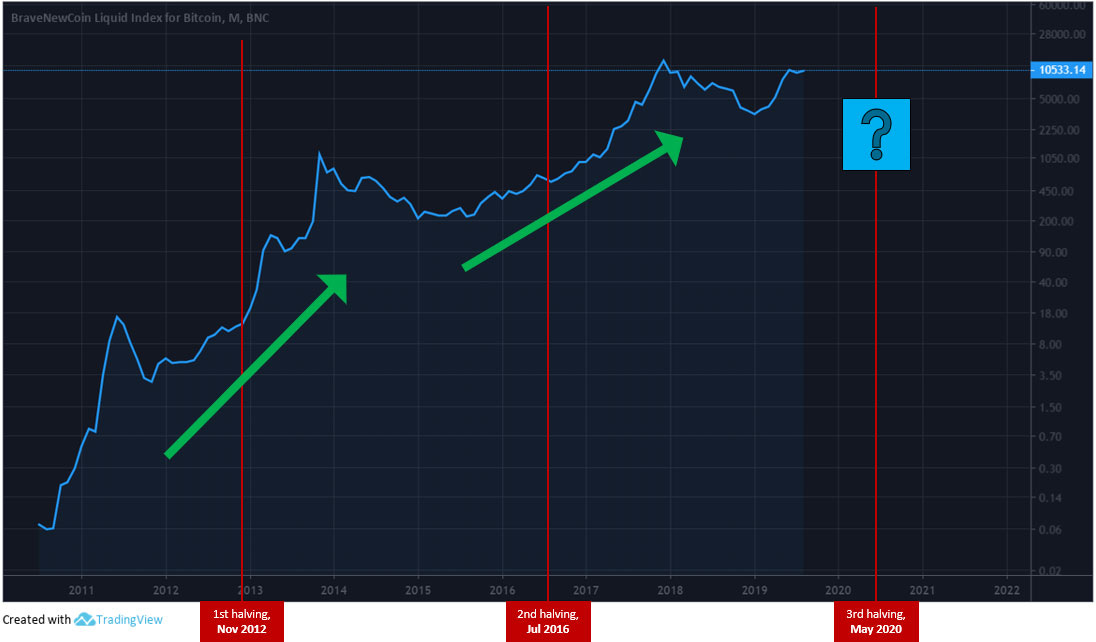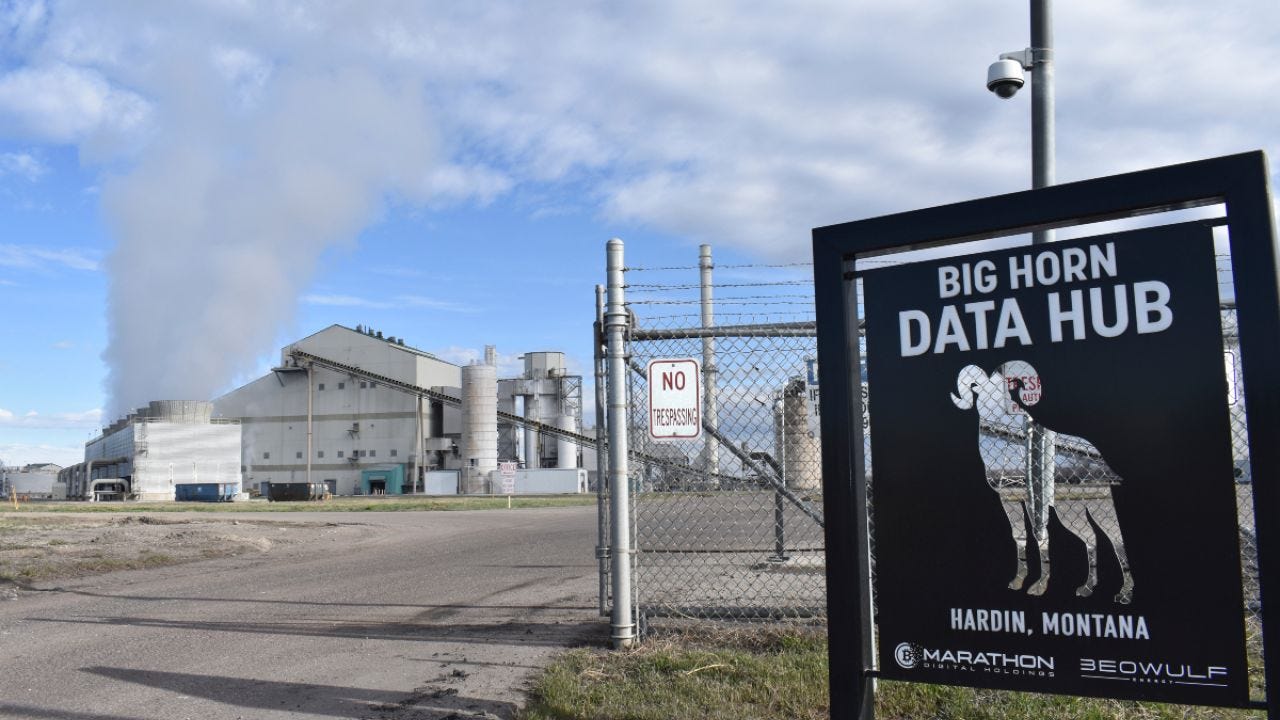Visit the Evidence Files Facebook and YouTube pages; Like, Follow, Subscribe or Share!
The unstable, but growing monetary trend we now call cryptocurrency is seriously exacerbating an already monumental environmental crisis. Greedily imbibing extraordinary amounts of energy—energy typically derived from fossil fuels—the rise of mining operations is disproportionately contributing to CO2 and other harmful emissions for a comparatively small benefit.
Cryptocurrency-mining computers, about the size of a 6-pack cooler, consume relatively little power individually. The computers, known in the industry as rigs, perform computations to “mine” bitcoins. Understanding the mining process helps to explain the reason why it gulps up so much energy. First, it is necessary to describe the method of transacting cryptocurrency. Here is a distillation of how it works taken directly from Satoshi Nakamoto’s paper, “Bitcoin: A Peer-to-Peer Electronic Cash System.”
We define an electronic coin as a chain of digital signatures. Each owner transfers the coin to the next by digitally signing a hash of the previous transaction and the public key of the next owner and adding these to the end of the coin. A payee can verify the signatures to verify the chain of ownership.
Digital signatures are stored on a ledger. Cryptocurrency uses a distributed ledger, essentially multiple copies of the ledger stored on any number of nodes across a network. Any changes to the ledger occur across all nodes, whereby those changes are verified as accurate by the various hosts of the nodes. When the hosts agree upon any change made, the transaction becomes complete. To confirm a transaction, the hash value of the previous transaction is calculated along with the public key, then these values are added to the new transaction. This is repeated each time a transaction occurs—which means any alteration in any part of the transaction will void the entire thing because the hash value will be incorrect.
The term “mining” includes this process, but also encompasses the goal of adding new coin to the supply. Some people focus exclusively on generating new coins. Here’s how it works. Once a transaction is confirmed, it is added to a memory pool where it waits to be included in a new block. This new block, called a candidate block, is built when a node selects transactions from the memory pool and adds them to the block. While the mathematical computations through which transactions are selected to add to the block are complex (it depends on factors such as age and amount of the transaction), the first transaction added to the new block is called the coinbase transaction. Following that are several more calculations, such as generating the structure of the coinbase transaction, creating coinbase data (which serves as proof of the creation date and includes a message from the miner), constructing the block header, determining the reward and fees for the block (i.e., how the miner gets paid), and many more items. The chief difficulty occurs after the above process. Upon filling a block, the miner must find a solution to the proof-of-work algorithm necessary to confirm the block as valid. Andreas M. Antonopoulos describes the process as such:
In the simplest terms, mining is the process of hashing the block header repeatedly, changing one parameter, until the resulting hash matches a specific target. The hash function’s result cannot be determined in advance, nor can a pattern be created that will produce a specific hash value. This feature of hash functions means that the only way to produce a hash result matching a specific target is to try again and again, randomly modifying the input until the desired hash result appears by chance.
A hash algorithm takes an arbitrary-length data input and produces a fixed-length deterministic result, a digital fingerprint of the input. For any specific input, the resulting hash will always be the same and can be easily calculated and verified by anyone implementing the same hash algorithm. The key characteristic of a cryptographic hash algorithm is that it is virtually impossible to find two different inputs that produce the same fingerprint. As a corollary, it is also virtually impossible to select an input in such a way as to produce a desired fingerprint, other than trying random inputs.
The miner constructs a candidate block filled with transactions. Next, the miner calculates the hash of this block’s header and sees if it is smaller than the current target. If the hash is not less than the target, the miner will modify the nonce (usually just incrementing it by one) and try again. At the current difficulty in the bitcoin network, miners have to try quadrillions of times before finding a nonce that results in a low enough block header hash.
Without going deeper than that, the key point to focus on here is the sheer volume of attempts it takes to discern the nonce—which is simply a variable used to change the output of the cryptographic function. Miners must find a hash value numerically less than the target, and they use the nonce to do it. Because the nonce can consist of virtually any value, and the hash output constitutes 256 bits of information, the number of possibilities is in the quadrillions. The first miner to find the solution receives the reward (the payment) for solving—or validating—the block. Thus, to effectively “mine” new cryptocurrency, a miner necessarily must complete as many calculations per second as possible. For Bitcoin, at least, completing a block in March of 2022 earned a miner $243,750. As time passes, the value per block continuously rises.
Source: masterthecyprto.com
The difficulty of mining a block increases for each of every 2,016 produced. This means that over time, the computing power required to successfully mine a block grows continuously (the number above [2,016] specifically refers to Bitcoin, but nearly all cryptocurrencies function this way). With the ferocity of the competition, driven by the value of successfully mining a block, miners continue to invest in ever more powerful machines to compute the quadrillions of possibilities. Miners have resorted to grouping together to enhance overall computing power and increase their odds of success. Sophisticated teams often employ cloud-linked graphic processing units (GPUs) or application specific integrated circuits (ASICs). ASICs target one specific currency—such as Bitcoin or Ethereum—which means that a particular ASIC will only focus on the algorithm used by the cryptocurrency it targets. For Bitcoin, as an example, the target algorithm is SHA256. Current ASICs can attempt 150 x 1012 hashes per second. That is how, despite the seemingly infinite number of possible attempts needed to solve a single block, the average time-to-solve rate currently stands at 9 minutes and 56 seconds.
So how does all of this math and computing contribute to environmental destruction?
Computational power of the magnitude needed here requires energy—lots of it. As noted above, miners utilize rigs to solve the mathematical problem. For the speed required to be the first to solve a block, miners employ enormous numbers of rigs. Just to mine Bitcoin—a single one among many cryptocurrencies—miners consume about 110 Terawatt Hours per year, or “0.55% of global electricity production, or roughly equivalent to the annual energy draw of small countries like Malaysia or Sweden.” The same article which illustrated this comparison, however, vacillated on the environmental impact of that amount of energy draw by stating:
[T]he actual negative impact we’re talking about is likely a lot less alarming than you might think. But there’s no denying that Bitcoin (like almost everything else that adds value in our society) does consume resources.
To reach that conclusion, author Nic Carter pointed to miners’ alleged use of renewable resources as well as “excess resources” of traditional energy development that would otherwise be wasted. Carter stated, “Given the reality that oil is and will continue to be extracted for the foreseeable future, exploiting a natural byproduct of the process (and potentially even reducing its environmental impact) is a net positive.” Carter’s reasoning seems to be contradicted by other evidence.
The Environmental Working Group (EWG) conducted several field studies to show how mining operations adversely affect the communities in which they operate. That organization concluded:
In six case studies, EWG profiles how a cryptocurrency mining process known as “proof of work” can create air, climate, water, waste, and noise pollution for those living nearby. The report spotlights the experiences of locals in six states and how the arrival of cryptocurrency mining has changed their lives and environments for the worse… Some rely on the resurrection of dormant fossil fuel power plants, some find low-cost high-pollution fuel sources like burning coal waste in Pennsylvania, and others flare gas from oil wells to generate the necessary electricity, like the mines blighting Montana’s scenery.
In one case, EWG examined crypto mining in Kentucky, a state that generates 71% of its electricity by burning environmentally unfriendly coal. As one crypto mining company working there has expanded operations, so too has the Big Rivers Electric coal-fired power plant. According to EWG, this crypto mining company raised $25 million to add at least 8,000 mining machines, and some of that money also went to upgrades to local transformers, suggesting both the utility and the miner expect to see a serious increase in the consumption coal-derived electricity. Although it contains just 1.3% of the population of the United States, Kentucky currently emits 3.4% of the country’s CO2, 4% of its sulfur dioxide, and 2.5% of its nitrogen oxide, all from its electricity industry alone.
In Montana, EWG found that “Air pollution and greenhouse gas emissions continue to rise as a result of flaring, coal-fired power plants and other energy sources working 24 hours a day, seven days a week, just to ‘mine’ bitcoin.”
The above photo depicts what one such mining center looks like (photo from EWG website). To power this facility, natural gas wells flare giant flames skyward day and night. In addition, the Hardin Generating Station, a coal-fired powerplant, which was slated to close in 2018, has been rekindled to provide additional electricity in response to the miner facilities’ demand. According to the American Lung Association, the county in which that station is located received an “F” grade for air pollution. This is likely caused, in large part, by an increase of 755,700 tons of CO2 emissions by the Hardin Generating Station in 2021 alone. Following the plant’s anticipated closing date in 2018, its emissions have increased by 816% due to its ramping up operations to accommodate crypto miners.
Another organization, Earth Justice, outlined claims by crypto mining companies that it says are anything from “outright fiction and greenwashing to no more than hopeful theories, undermined by actual practices.” It pointed to the following facts based on its own analysis.
Most mining facilities draw power from the grid — meaning their electricity is generated by whatever existing energy is in place in the region, or is contracted by their utility.
Adding a new large-scale load, like a cryptocurrency mining facility, to the grid generally requires existing fossil generators to increase their output.
Mining facilities located near wind or solar sites do not have a special claim to energy produced by that energy, but instead drive increased emissions from gas and coal plants.
There are few mining facilities actually building new renewable energy to power their operations.
Moreover, Earth Justice noted that the crypto mining industry already uses half the amount of energy as that used by the global banking industry, while producing an almost immeasurably small comparative value. The speed with which mining companies set up operations—driven by the ease of doing so and the lack of regulatory authority—essentially precludes them from considering or investing in renewable resources to power them. Instead, they turn to fossil fuel plants, often even repurposing those that had previously shut down.
Like most industries who value profit over sustainability, the crypto mining industry has complained about the “rush” to regulate. Ben Strack, of Blockworks, outlined regulatory actions in certain states, some of which actually exacerbate rather than help the problem—hardly a “rush” of regulation. In Arkansas, for example, legislators have voted on a law that “prohibits a local government from imposing requirements for crypto miners that differ from those applicable to data centers, such as rezoning areas to unfairly target such businesses.” Montana legislators followed suit, focusing on the “economic value” of crypto mining, and all but disregarding the environmental impact. Notably, the Montana state government has recently lost a case in court wherein it was found to have violated its own constitution in its callous disregard for environmental protections.
In Texas, legislators proposed a bill allowing for throttling power draws by mining operations as electricity companies see fit to maintain the balance of the power grid. Importantly, Texas has had considerable problems with its power grid in recent years, suffering numerous failures during extreme weather events. In just one of those failures, an estimated 700 people died. Despite this history, one mining company there called the bill “misguided.” Legislators have not yet passed the bill and, given the corrupt nature of the relationship between power providers and government officials there, they probably never will.
At least some states have taken a stance to try to control the situation, with varying results. Oregon legislators passed a bill that demands that any:
person who owns, operates or controls high energy use facility to ensure that greenhouse gas emissions associated with electricity used by high energy use facility are reduced to 60 percent below baseline emissions levels by 2027, 80 percent below baseline emissions levels by 2030, 90 percent below baseline emissions levels by 2035 and 100 percent below baseline emissions levels by 2040
Representative Pam Marsh stated that “This is a bill that aims to bring the very largest of our energy and consumptive operations including crypto miners and data centers in line with the Senate and House Bill 2021.” Unfortunately, that bill was tabled after extensive lobbying by serial polluter Amazon.
Governor Kathy Hochul of New York State signed a bill into law recently that established a full prohibition on crypto mining using proof-of-work methods for at least two years. Kristin Smith, executive director of Blockchain Association, said the law would “have a significant chilling effect on crypto mining in the state.” It seems that was exactly the bill’s intent. Smith also claimed the prohibition would send “hundreds” of jobs to other states.
Many industries bemoan the alleged loss of jobs when governments attempt to regulate their polluting practices. In some cases, there is indeed a tradeoff between providing jobs to an area versus protecting it from environmental destruction. Crypto mining, however, does not appear to be among those cases. For example, Kentucky offered an “economic development [electricity] rate” to Blockware Mining, LLC in exchange for “bringing jobs and capital investment into the Commonwealth.” Despite receiving huge discounts on electricity, and costing the state a lot of money to make utility upgrades, Blockware provided just 10 full-time jobs and had a net economic impact of negative $19 million on the area. Marathon Digital Holdings, which operates mining facilities in Texas and Montana, netted a total of 9 full-time employees. AboutBit invested $50 million into its coal-driven facility in Indiana and yet hired only 15 full-time employees. Another company in Rockdale, Texas promised to build the “world’s biggest” mining facility and to hire 350 full-time workers; it ultimately ended up with just 14 employees.
We are seeing an alarming trend of new tech-related industries running rampant, polluting the environment, lying to the communities in which they want to settle, and causing innumerable other harms to society, all in the name of profit. In other pieces, I have written about this at length concerning Language Learning Models and AI. What is happening with the crypto mining industry mirrors the general moral degradation of Silicon Valley. On this, I previously wrote:
Another factor is the eroding reputation companies from the Valley have earned. Huge scandals such as the Theranos fraud, the imminent collapse of Facebook (ineffectively renamed Meta), the rapid destruction of Twitter, and the recent failure of Silicon Valley Bank (including what looks an awful lot like pre-collapse insider trading by its executives) have smeared the entire community with the stain of greed and filth. And those only overshadow the myriad other scandals, such as the nearly $400 million Google paid for allegedly tracking private internet use, the donor-advised funds (DAFs) issue, or simply the typically lousy work conditions, among others.
None of this is about innovation or improving society by bringing economic life to stagnant areas. It is simply about a select few getting rich off of the very people to whom they make their lofty, deceptive promises—irrespective of the consequences to the environment or people. The sluggishness with which regulators approach these problems merely opens the door for more, and continued abuse. By the time the practices outlined above become regulated, the newest tech debacle will already hit the masses and laws will remain forever behind.
***
I am a Certified Forensic Computer Examiner, Certified Crime Analyst, Certified Fraud Examiner, and Certified Financial Crimes Investigator with a Juris Doctor and a Master’s degree in history. I spent 10 years working in the New York State Division of Criminal Justice as Senior Analyst and Investigator. Today, I teach Cybersecurity, Ethical Hacking, and Digital Forensics at Softwarica College of IT and E-Commerce in Nepal. In addition, I offer training on Financial Crime Prevention and Investigation. I was a firefighter before I joined law enforcement and now I currently run a non-profit that uses mobile applications and other technologies to create Early Alert Systems for natural disasters for people living in remote or poor areas.
Find more about me on Instagram, Facebook, Twitter, LinkedIn, or Mastodon. Or visit my EALS Global Foundation’s webpage page here.
Read the article below for a discussion of the Montana environmental case (and others) on Climate Change. See below that for an argument to regulate AI. Thanks for reading!








This is crazy that it's happening and politicians are helping them screw the world.